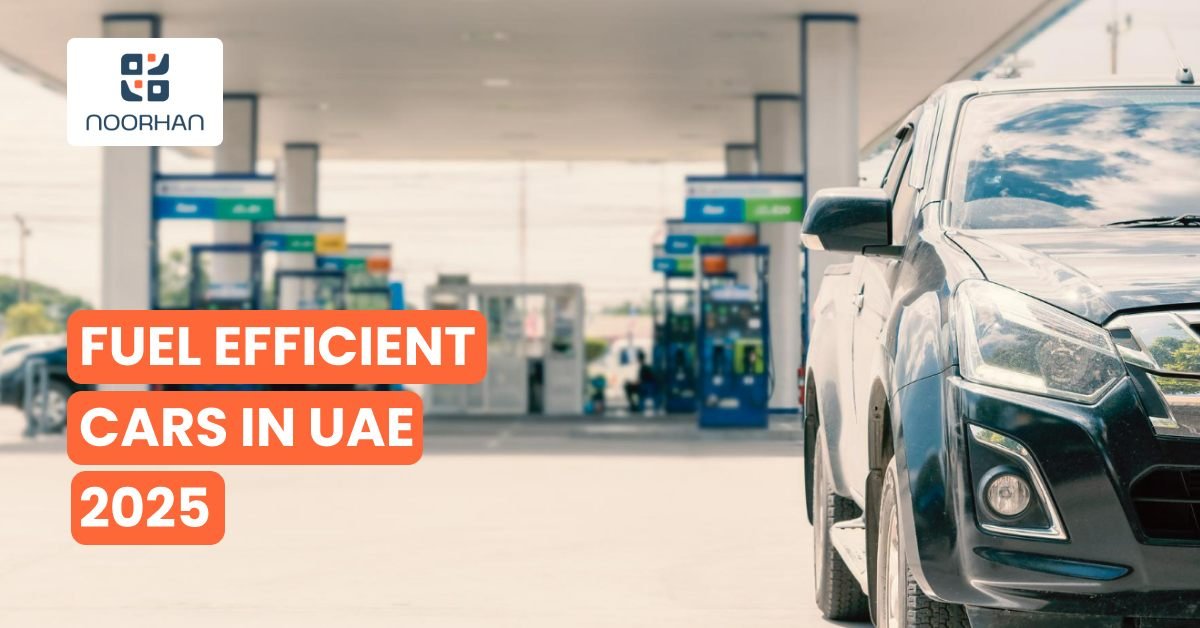-
Understanding Fleet MaintenanceUnderstanding Fleet Maintenance
-
Importance of Fleet MaintenanceImportance of Fleet Maintenance
-
Practical Solutions for Cost ReductionPractical Solutions for Cost Reduction
-
Climate-Specific Maintenance TipsClimate-Specific Maintenance Tips
-
Regulatory & Compliance ConsiderationsRegulatory & Compliance Considerations
-
Practical On-Ground DetailsPractical On-Ground Details
-
Additional Cost-Saving TipsAdditional Cost-Saving Tips
Managing a fleet of vehicles is a significant responsibility, especially in a dynamic environment like the UAE, where the climate and road conditions can impact vehicle performance and maintenance needs. Reducing maintenance costs while ensuring safety and reliability is crucial for fleet managers. This blog will explore practical strategies to minimize maintenance expenses, enhance vehicle longevity, and optimize fleet operations.
Understanding Fleet Maintenance
Fleet maintenance involves a series of activities aimed at keeping vehicles in optimal working condition. These activities include regular inspections, preventive maintenance, repairs, and compliance with safety regulations. Proper fleet maintenance not only extends the lifespan of vehicles but also reduces the risk of unexpected breakdowns, which can lead to costly repairs and downtime.
Importance of Fleet Maintenance
- Cost Efficiency: Regular maintenance prevents minor issues from escalating into major repairs, saving money in the long run.
- Safety: Well-maintained vehicles reduce the risk of accidents caused by mechanical failures.
- Compliance: Adhering to maintenance schedules ensures compliance with local regulations and safety standards.
- Operational Efficiency: A reliable fleet enhances productivity and customer satisfaction by minimizing delays.
Practical Solutions to Reduce Maintenance Costs
1. Implement a Preventive Maintenance Program
Preventive maintenance is a proactive approach that involves scheduling regular inspections and maintenance tasks based on mileage or time intervals. This strategy helps identify potential issues before they become significant problems.
- Create a Maintenance Schedule: Develop a detailed maintenance schedule for each vehicle in your fleet, outlining specific tasks such as oil changes, tire rotations, and brake inspections.
- Use Fleet Management Software: Implement software that tracks maintenance schedules, service history, and alerts for upcoming maintenance tasks. This automation reduces administrative overhead and ensures timely servicing.
2. Monitor Vehicle Health with Telematics
Telematics technology provides real-time data on vehicle performance, allowing fleet managers to monitor health and usage patterns.
- GPS Tracking: Use GPS tracking systems to monitor vehicle location, speed, and driving behavior. This data can help identify inefficient driving practices that lead to increased wear and tear.
- Diagnostic Tools: Integrate OBD-II (On-Board Diagnostics) systems that provide insights into engine performance and alert managers to potential issues before they escalate.
3. Optimize Fuel Efficiency
Fuel costs are a significant portion of fleet operating expenses. Improving fuel efficiency can lead to substantial savings.
- Driver Training: Conduct training sessions for drivers on fuel-efficient driving techniques, such as maintaining steady speeds, avoiding rapid acceleration, and reducing idling time.
- Route Optimization: Use route optimization software to plan the most efficient routes, reducing fuel consumption and travel time.
4. Invest in Quality Parts and Services
Using high-quality parts and services can enhance vehicle performance and longevity, ultimately reducing maintenance costs.
- OEM Parts: Whenever possible, use Original Equipment Manufacturer (OEM) parts for replacements. While they may be more expensive upfront, they often last longer and perform better than cheaper alternatives.
- Trusted Service Providers: Establish relationships with reputable service providers who offer reliable maintenance services at competitive prices.
5. Conduct Regular Inspections and Driver Checks
Regular inspections and driver checks can help identify issues early and ensure that vehicles are operating safely.
- Daily Vehicle Inspections: Implement a daily inspection checklist for drivers to complete before operating a vehicle. This can include checking tire pressure, fluid levels, and brake functionality.
- Driver Feedback: Encourage drivers to report any unusual sounds or performance issues immediately. Creating a culture of open communication can lead to quicker resolutions of potential problems.
6. Manage Tire Maintenance Effectively
Tires are critical for vehicle safety and performance. Proper tire maintenance can significantly impact overall maintenance costs.
- Regular Rotation and Alignment: Schedule regular tire rotations and alignments to ensure even wear and extend tire life.
- Monitor Tire Pressure: Use tire pressure monitoring systems (TPMS) to ensure tires are inflated to the recommended levels, improving fuel efficiency and reducing the risk of blowouts.
7. Embrace Technology for Fleet Management
Leveraging technology can streamline operations and reduce maintenance costs.
- Fleet Management Software: Invest in comprehensive fleet management software that integrates maintenance scheduling, tracking, and reporting. This can help manage costs more effectively and improve decision-making.
- Mobile Apps: Use mobile applications that allow drivers to report issues, track maintenance schedules, and access vehicle information on the go.
8. Analyze Maintenance Data
Regularly analyzing maintenance data can provide valuable insights into trends and areas for improvement.
- Track Costs: Keep detailed records of maintenance costs for each vehicle. Analyzing this data can help identify which vehicles are costing more to maintain and why.
- Identify Patterns: Look for patterns in repairs and maintenance needs. If certain vehicles require frequent repairs, it may be time to consider replacing them or adjusting their usage.
9. Train and Educate Employees
Investing in training for both drivers and maintenance staff can lead to better vehicle care and reduced costs.
- Driver Education Programs: Implement ongoing training programs that focus on safe driving practices, vehicle care, and reporting issues.
- Maintenance Training: Provide training for maintenance staff on the latest techniques and technologies in vehicle maintenance to ensure high-quality service.
10. Consider Alternative Fuel Options
Exploring alternative fuel options can lead to long-term savings and reduced environmental impact.
- Electric and Hybrid Vehicles: Consider integrating electric or hybrid vehicles into your fleet. While the initial investment may be higher, these vehicles often have lower operating and maintenance costs.
- Fuel Management Systems: Implement fuel management systems that track fuel usage and optimize fuel purchases, helping to reduce costs associated with fuel consumption.
Climate-Specific Maintenance Tips
Heat-Related Wear and Tear
- Cooling Systems: Ensure that cooling systems are regularly checked and maintained. High temperatures in the UAE can put extra strain on engines, making cooling system maintenance critical.
- Battery Maintenance: Heat can significantly reduce battery life. Regular checks and maintenance of batteries can prevent unexpected failures.
Sand and Dust Considerations
- Air Filters: Frequent replacement of air filters is necessary due to the high levels of dust and sand.
- Seals and Lubrication: Ensure seals and lubricants are appropriate for dusty environments to prevent wear and contamination.
Regulatory and Compliance Considerations
Local Regulations
- Compliance with UAE Laws: Ensure that fleet maintenance practices comply with UAE regulations regarding vehicle emissions, safety inspections, and other relevant laws.
- MOHRE Guidelines: Adhering to guidelines set by the Ministry of Human Resources and Emiratisation (MOHRE) for vehicle and driver safety.
Practical On-Ground Details
Emergency Preparedness
- Emergency Kits: Equip vehicles with emergency kits, including tools, spare parts, first aid, and communication devices.
- Roadside Assistance: Have a reliable roadside assistance service in place to handle breakdowns and emergencies efficiently.
Vendor Relationships
- Local Service Providers: Establish relationships with local service providers who understand the specific conditions and requirements of the UAE environment.
- Bulk Purchase Agreements: Negotiate bulk purchase agreements for parts and consumables to reduce costs.
Driver Engagement
- Driver Incentive Programs: Implement incentive programs to encourage drivers to adhere to maintenance schedules and drive responsibly.
- Feedback Mechanisms: Create easy and anonymous feedback mechanisms for drivers to report issues and suggest improvements.
Additional Cost-Saving Tips
Energy-Efficient Practices
- Eco-Driving Programs: Promote eco-driving habits that reduce fuel consumption and wear on the vehicles.
- Idle Reduction Policies: Enforce policies to minimize idling, which wastes fuel and increases engine wear.
Technology Upgrades
- Advanced Diagnostics: Use advanced diagnostic tools and software to predict and prevent failures before they occur.
- Integration of AI: Implement AI-based systems for predictive maintenance to optimize the timing of maintenance activities and reduce unexpected breakdowns.
Conclusion
Reducing maintenance costs for your car fleet in the UAE requires a proactive approach that combines effective management practices, technology, and employee training. By implementing a preventive maintenance program, monitoring vehicle health with telematics, optimizing fuel efficiency, and embracing technology, fleet managers can significantly reduce costs while ensuring the safety and reliability of their vehicles. Regular analysis of maintenance data and ongoing training for drivers and maintenance staff will further enhance fleet performance and contribute to long-term savings. By prioritizing these strategies, you can create a more efficient and cost-effective fleet operation that meets the demands of the UAE’s unique driving environment.







